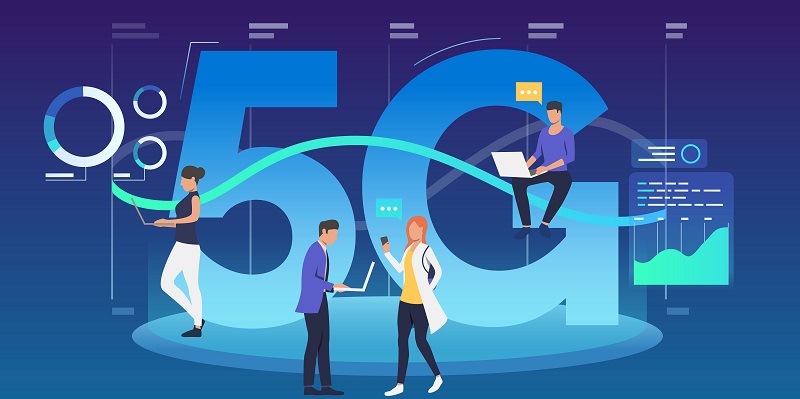The advent of 5G networks has sparked a technological revolution, reshaping the landscape of global industrial transmitters and redefining the future of connectivity. With data transmission rates up to 100 times faster than 4G, the 5G networks are set to revolutionize industrial transmitters, devices that convert various process variables into useful analytical data.
Impact of 5G on Industrial Transmitters
The implementation of 5G networks represents a quantum leap for industrial transmitters, offering lightning-fast data transmission rates. The improved speeds enable real-time monitoring and analysis, empowering industries to make informed decisions faster than ever before. Industrial transmitters play a critical role in providing valuable insights into various industrial processes. With 5G networks, these transmitters can collect and transmit data at an unprecedented pace, allowing for enhanced process efficiency, accuracy, and control.
Conversion of Process Variables Into Analytical Data
Industrial transmitters convert process variables, such as temperature, pressure, and flow rate, into useful analytical data. The blazing fast data transmission speeds of 5G networks enable these transmitters to provide accurate real-time analytics, enabling industries to optimize their operations and make data-driven decisions.
Improvement in Latency Issues
A longstanding problem in industrial transmitters has been latency issues, which cause delays and hinder real-time analytics and decision-making. 5G networks have the potential to dramatically reduce latency, ensuring that critical data is transmitted and analysed instantly.
Enhanced Efficiency and Responsiveness in Industrial Processes
The low latency provided by 5G networks will pave the way for more efficient and responsive industrial processes. With near-instantaneous data transfer, industries can streamline operations, detect and respond to anomalies promptly, and maintain smooth operations even in high-demand scenarios.
Higher Density of Connected Devices Per unit Area
5G technology offers enhanced connectivity, allowing for a significantly higher density of connected devices per square kilometre. This means that industrial transmitters can seamlessly coexist with a multitude of other devices, ensuring uninterrupted data transmission and analysis. The integration of 5G networks ensures that industrial transmitters in high-density areas can function flawlessly, enabling industries to optimize their processes even in crowded environments. This breakthrough eliminates connectivity bottlenecks and enhances operational efficiency.
Integration of 5G for IoT in Industries
The integration of 5G networks with industrial transmitters paves the way for the Industrial Internet of Things (IoT) revolution. With seamless connectivity, industries can harness the power of IoT, leading to increased productivity, reduced costs, and improved efficiency. Industrial processes can be automated and optimized, saving time and resources.
Improved safety through efficient data transmission and analysis
By leveraging the capabilities of 5G networks and industrial transmitters, industries can enhance safety protocols. With real-time data transmission and analysis, potential risks can be detected and addressed swiftly, ensuring worker safety and preventing accidents, ultimately creating a safer industrial environment.
Collaboration between 5G networks and AI/ML
The implementation of 5G networks fosters the development of advanced technologies such as Artificial Intelligence (AI) and Machine Learning (ML). The fusion of 5G and AI/ML opens up new opportunities for industrial transformers, enabling them to learn from data patterns, predict maintenance requirements, and optimize processes dynamically. With optimized connectivity, industrial transmitters can leverage AI and ML algorithms for predictive maintenance, process optimization, and other critical applications. Predictive maintenance prevents unexpected downtime and maximizes equipment uptime, resulting in more efficient operations and reduced costs.
Challenges in the Transition to 5G Networks
With the increasing number of connected devices, the industry-wide implementation of 5G networks raises cybersecurity concerns. Protecting industrial transmitters and the transmitted data from potential threats becomes crucial, requiring robust cybersecurity measures and regular updates to mitigate risks effectively. A seamless transition to 5G networks necessitates substantial infrastructure development, including the installation of new towers and network infrastructure. Industries must invest in upgrading their infrastructure to fully reap the benefits of 5G networks.
Regulatory Hurdles
The implementation of 5G networks raises regulatory challenges, as spectrum allocation, licensing, and compliance issues need to be addressed. Governments and regulatory bodies must collaborate with industries to develop comprehensive frameworks that facilitate the seamless integration of 5G networks into industrial processes.
The advent of 5G networks presents a transformative opportunity for industrial transmitters and the industries they serve. The incredible speed, enhanced connectivity, and lower latency offered by 5G networks empower industries to revolutionize their operations, increase productivity, reduce costs, and improve safety standards. Though challenges such as cybersecurity, infrastructure development, and regulatory concerns need to be effectively tackled, the benefits of 5G networks undoubtedly outweigh these hurdles. It is clear that the integration of 5G networks with industrial transmitters is a worthwhile investment for the future, leading to unprecedented advancements in connectivity, data analysis, and overall industrial efficiency.

